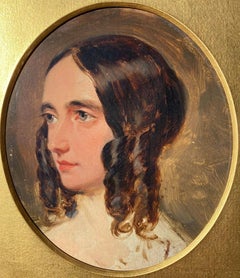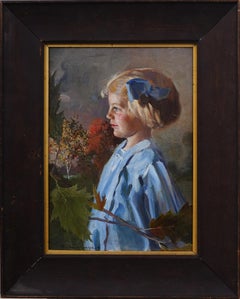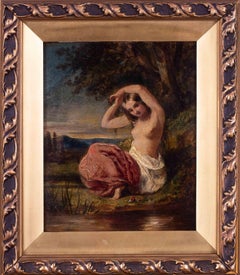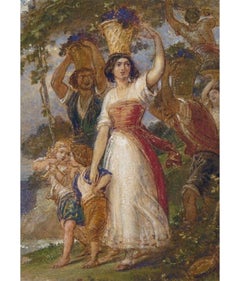William Edward Frost Paintings
William Edward Frost was an English painter of the Victorian era. Virtually alone among English artists in the middle Victorian period, he devoted his practice to the portrayal of the female nude. Frost was educated in the schools of the Royal Academy. At the beginning of 1829, he established a reputation as a portrait painter before branching into historical and mythological subjects, including the subgenre of fairy painting that was characteristic of Victorian art. In 1839, he won the Royal Academy's gold medal for his Prometheus Bound, and in 1843, he won a prize in the Westminster Hall competition for his Una Alarmed by Fauns (a subject from Spenser's The Faerie Queene). He was elected an associate member of the Royal Academy in 1846 and a full member in 1870. Frost is widely recognized as a follower of William Etty, who preceded him as the primary British painter of nudes in the second quarter of the nineteenth century. Despite the prudishness of the Victorian era, Frost's relatively chaste nudes were popular and his career was financially successful. At their best, Frost's works have a distinctive jewel-like charm, his attractive young women models possessing a pert, self-conscious quality, which makes them more titillating than Etty's powerful studies.
19th Century Realist William Edward Frost Paintings
Oil
19th Century English School William Edward Frost Paintings
Oil, Board
1990s Realist William Edward Frost Paintings
Oil
Early 1900s Realist William Edward Frost Paintings
Canvas, Oil
18th Century English School William Edward Frost Paintings
Oil
Late 19th Century Realist William Edward Frost Paintings
Canvas, Wood, Oil
Late 19th Century Realist William Edward Frost Paintings
Oil, Panel
Late 19th Century English School William Edward Frost Paintings
Oil
20th Century Realist William Edward Frost Paintings
Canvas, Cotton Canvas, Oil
20th Century Realist William Edward Frost Paintings
Canvas, Cotton Canvas, Oil
1870s Realist William Edward Frost Paintings
Oil, Canvas
1990s Realist William Edward Frost Paintings
Oil
1780s English School William Edward Frost Paintings
Oil
Early 1900s English School William Edward Frost Paintings
Canvas, Oil
19th Century Academic William Edward Frost Paintings
Oil, Board
Mid-19th Century Victorian William Edward Frost Paintings
Gouache




